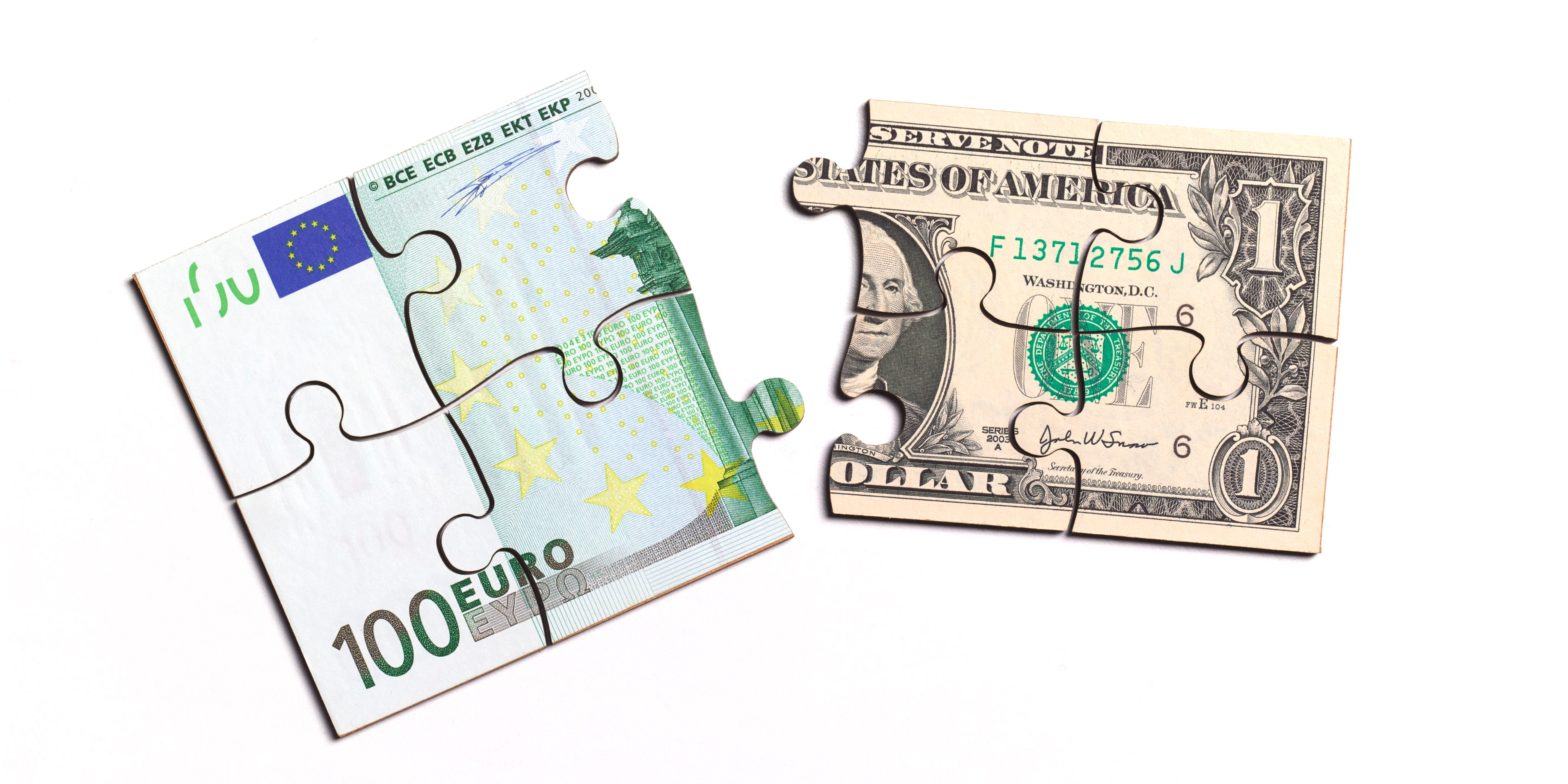The dollar and euro are on the verge of being equal for the first time since 2002. A top economist told Insider that parity could be reached within “a month or so.” The euro has lost nearly 14% against the dollar in the past year and is far below its March 2008 peak of roughly $1.58. Loading Something is loading.
The euro recently sank to a five-year low against the dollar, raising expectations that the world’s two most traded currencies could soon reach parity for the first time since 2002.
On Tuesday, the euro exchange rate with the dollar was hovering around $1.05, down about 7.3% year to date and nearly 14% below year-ago levels. Last week, the euro approached its 2017 low of $1.034 before rebounding a bit this week.
Barring unforeseen circumstances, euro-dollar parity could happen within “a month or so,” according to Aleksandar Tomic, economist and associate dean at Boston College.
“[Parity] is an indicator of lack of faith in the euro area economy going forward, which is not surprising,” he told Insider.
The euro launched in 1999 and traded below the dollar in the early years. But the euro rallied and eventually soared to a peak of roughly $1.58 in March 2008.
Easy-money policies from the Federal Reserve helped keep the euro above the dollar, but now that’s taking a hard turn in the other direction. The Fed has hiked rates by 0.75 basis points, and expectations for an aggressive cycle of continued increases have sent US bond yields surging.
That’s lifted the dollar against the euro as well as the world’s other top currencies. The dollar index, which measures the greenback against a basket of currencies, is up 7.76% year to date and 14.7% from a year ago.
Russia’s war on Ukraine as well as broader market turmoil have also sent investors flocking to the safe haven of the dollar. Analysts at both HSBC and RBC Capital Markets expect the two currencies will reach parity sometime this year.
And hedge funds are predicting the same. In the past month, firms have poured $7 billion in notional value into bets on parity, Bloomberg reported, and it’s become the most popular wager in the options market.
Euro vs. dollar: economic outlookA weakening eurozone economy is weighing on the euro’s prospects. Russia’s war on Ukraine has severely impacted the outlook, and more pain could mount if an EU embargo on Russia oil sets in. The International Monetary Fund cut its 2022 growth forecast for the bloc to 2.8% from 3.9%.
As a result, the European Central Bank will likely lift interest rates less aggressively than the Fed will, said Vincent Mortier, the chief investment officer at Amundi — Europe’s largest asset manager.
“We are facing lower growth or probably a recession in the eurozone,” he told the Financial Times last week, predicting dollar-euro parity will come within six months.
While the war has created bleak economic prospects for Europe, it has had a far lesser impact on the US economy, Tomic pointed out.
That means the Fed is in a better position than the ECB to combat inflation. Expectations that inflation in the eurozone will be higher than in the US are putting more downward pressure on the euro, he added.
“There’s nothing deep about dollar-euro parity, but it’s an indicator of the scale of global turmoil,” Tomic said.
